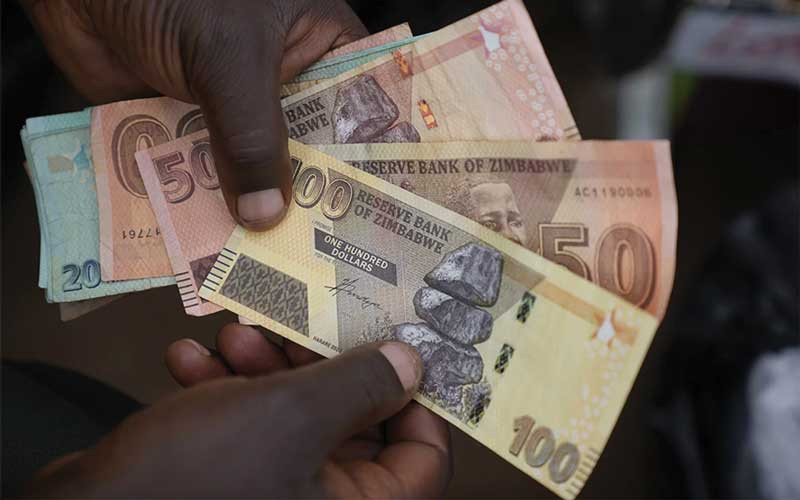
THE Zimdollar is projected to weaken further, while exports become more expensive relative to peers as the US Federal Reserve continues to raise interest rates, making the greenback stronger, a leading research firm has said.
The local currency has been losing value since the beginning of the year, forcing monetary and fiscal authorities to introduce several measures to give it a new lease of life.
However, in its equity strategy paper released last week, Inter Horizon (IH) Securities said the local currency would lose more value in the short to medium term despite the measures put in place by the government.
“We continue to see a correlation between parallel market exchange rate and money supply. Treasury has managed to maintain some fiscal discipline, and this has resulted in exchange rates stabilising, to some extent, in the second half of the year,” the report read in part.
“Month-on-month inflation is also moving in tandem with the percentage change in money supply. Zimbabwe continues using a dual currency system with authorities working towards abandoning the US$ (United States dollar) once the ZWL (Zimdollar) has strengthened.”
It added: “However, in the short to medium term, we anticipate continued use of the US$, if not full re-dollarisation, as the local currency has significantly depreciated YTD (year-to-date).
“With the US Fed still increasing interest rates, we expect the US$ to strengthen making our local currency even weaker and our exports expensive relative to peers, negatively impacting our current account balance.”
Currently, the US Fed rate is 5,5%.
- Currency crisis hits capital markets
- Currency crisis hits capital markets
- DPC pays out $139 million
- Zimdollar shortage hits market
Keep Reading
Parallel market rate premium peaked at 151% in April 2022 before tapering off to 16% in September 2022. It then closed the year at 41% and currently stands at 49%.
Year-to-date, the interbank rate has weakened by 723% while the auction rate has weakened by 647% over the same period, according to IH Securities.
Zimbabwe real gross domestic product growth is projected to grow by 5,4% in 2023, according to official figures.
But the Zimbabwe National Statistics Agency (ZimStat) said the economy recovered by 1,5% in the second quarter of the year, after slumping by 10,1% in the first three months of the year.
ZimStat attributed the recovery to better power supply, improved agricultural output and more production of minerals, the economy’s mainstay. Growth in 2023 will be driven mostly by agriculture and services, particularly tourism.
Manufacturing and mining sectors’ growths are projected to slow in 2023, partly affected by electricity shortage, inflation, and exchange rate pressures.






